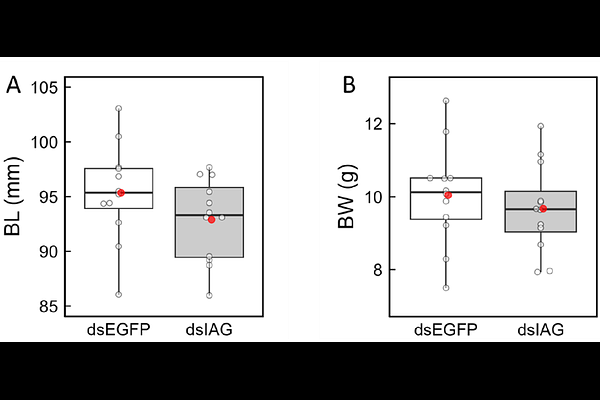Insulin-like androgenic gland factor regulates the development of internal and external secondary sexual characteristics in juvenile male kuruma prawn Marsupenaeus japonicus

Insulin-like androgenic gland factor regulates the development of internal and external secondary sexual characteristics in juvenile male kuruma prawn Marsupenaeus japonicus
Furukawa, T.; Yamane, F.; Takeuchi, R.; Ohira, T.; Toyota, K.; Miyazaki, T.; Tsutsui, N.
AbstractIn decapod crustaceans, insulin-like androgenic gland factor (IAG) is a well-known peptide hormone produced by the androgenic gland, a male-specific endocrine organ. In certain species classified within Pleocyemata, experimental manipulation of IAG signaling has successfully altered both internal and external sexual characteristics, leading to sex reversal. Therefore, IAG is considered a key regulator of male sexual differentiation and maturation and is thought to be a crustacean androgen. In the kuruma prawn Marsupenaeus japonicus (Dendrobranchiata), an important fishery species in Japan, a homologous molecule known as Maj-IAG has been identified. However, its physiological function in males remains poorly understood. In this context, we conducted Maj-IAG knockdown (KD) via RNA interference in juvenile male M. japonicus. Over a 9-week period, Maj-IAG KD significantly inhibited the development of the petasma, male-specific external copulatory structure, and parts of the internal reproductive organs, such as the vas deferens and seminal vesicles. In contrast, somatic growth and testicular development were unaffected by Maj-IAG KD. Histological analysis of the testes revealed no evident abnormalities such as degeneration of testicular structures or abnormal arrest of germ cell differentiation. These findings indicate that Maj-IAG partially governs the development of male secondary sexual characteristics in juveniles and further suggest that once testicular differentiation is initiated, the maintenance and development of the testis proceeds without dependence on Maj-IAG. Our study provides fundamental insights that may contribute to the advancement of functional sex reversal technologies in penaeid shrimps.